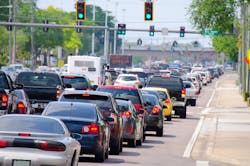Multi-Million Dollar Project to Help Northwest Florida Traffic in Development
The Florida Department of Transportation (FDOT) is helping Escambia and Santa Rosa counties are making a multi-million dollar investment into a traffic control hub. The hub, which will be located next to the Escambia Public Safety Building, will control over 1,000 traffic lights in the area.
Both counties have been using the technology for a few years now, and now that testing has been done, they are ready to expand.
The technology is called Intelligent Transportation Systems. The system will be able to monitor traffic in real time, allowing county workers to adjust if needed.
According to WEAR News, Emerald Coast Regional Council is the company helping to facilitate the project. Their CEO Austin Mount says the technology has even been able to to predict when and where an accident will happen with up to 80 percent accuracy.
"The whole purpose of this project is to synchronize traffic lights and traffic signals so commuters can get from home to work and from work to home in the most efficient way possible," Mount said. "While we can't alleviate the traffic, we can certainly make the flow easier for all walks of life."
A similar system is being used in Jacksonville and areas that were hit by Hurricane Ian to direct traffic away from damaged roads.
Mount says the project will cost millions of dollars, however no concrete number has been set. He added that FDOT would pay for the construction and design of the building.
It won't just be Escambia and Santa Rosa splitting the operational costs, cities like Pensacola, Milton, Gulf Breeze and more will also pay a portion of funds.
In interviews with WEAR News, Dave Piech, Santa Rosa County District 4 commissioner said, "This new technology is what we need. It's a step towards helping to alleviate the traffic and that's what we hear. People are stuck in traffic and they want traffic to move quicker."
"We've worked hard as a county to implement these all across the county signals over the last 2 to 3 years," Robert Bender, Escambia County District 4 commissioner said. "We started in 2019, and it's really made a difference."
Bender added that computer data picks out which streets are seeing more traffic and adjusts the lights to improve flow.
--------------------------------
Source: WEAR News
